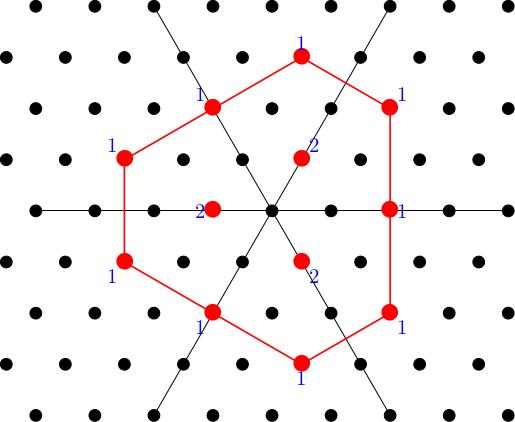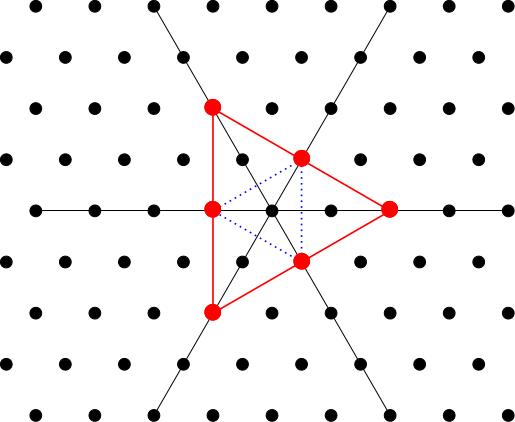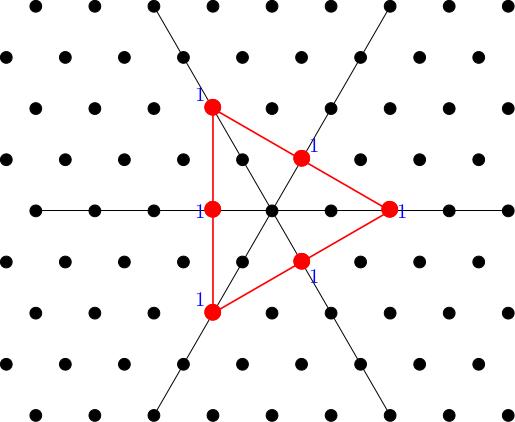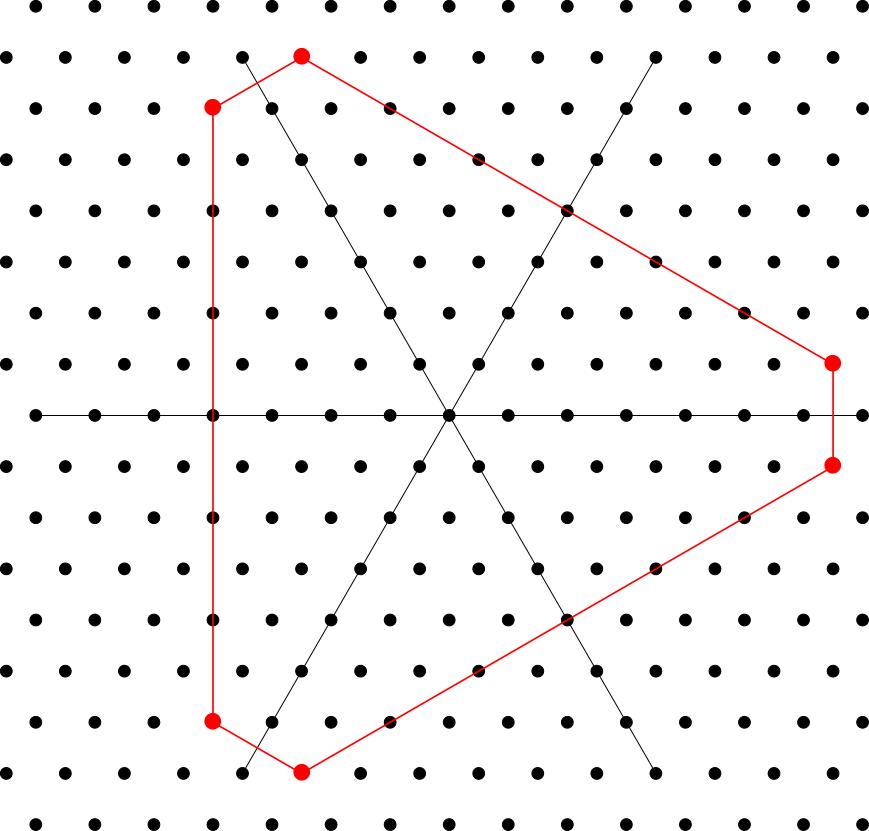For any pair of nonnegative integers k and l there exists an irreducible representation of SU(3) whose weight diagram is given by the following recipe. Moreover, any other irrep with the same weight diagram is isomorphic to Gamma k, l, and every irrep has its weight diagram constructed in this way. (We'll illustrate the recipe in the case k = 1, l = 2):
-
Take lambda = k L_1 minus l L_3 and apply the six elements of the Weyl group to get six (or possibly three) points in the weight lattice.
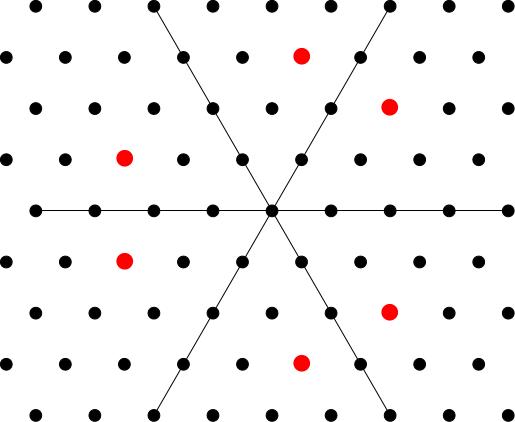
-
Join these dots to get a convex polygon P (more formally, we say that you take the convex hull of these points).
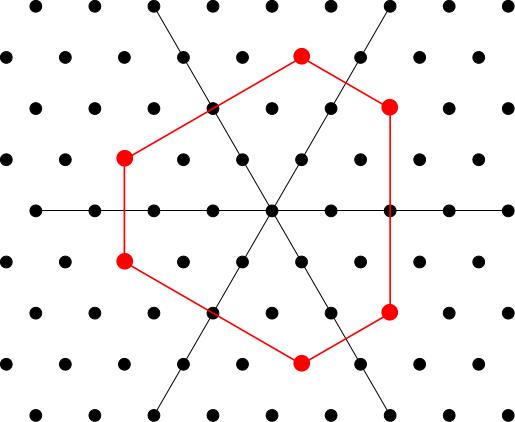
-
The weight diagram will consist of lattice points (i.e. integer linear combinations of L_1, L_2, L_3) contained in the polygon P. We don't get all of the lattice points in P, just as for SU(2) we didn't get all integer points in some interval. Take all the points inside P of the form lambda plus r where r is in the root lattice, that is the lattice of integer linear combinations of roots L_i minus L_j. Here is a picture of the root lattice:
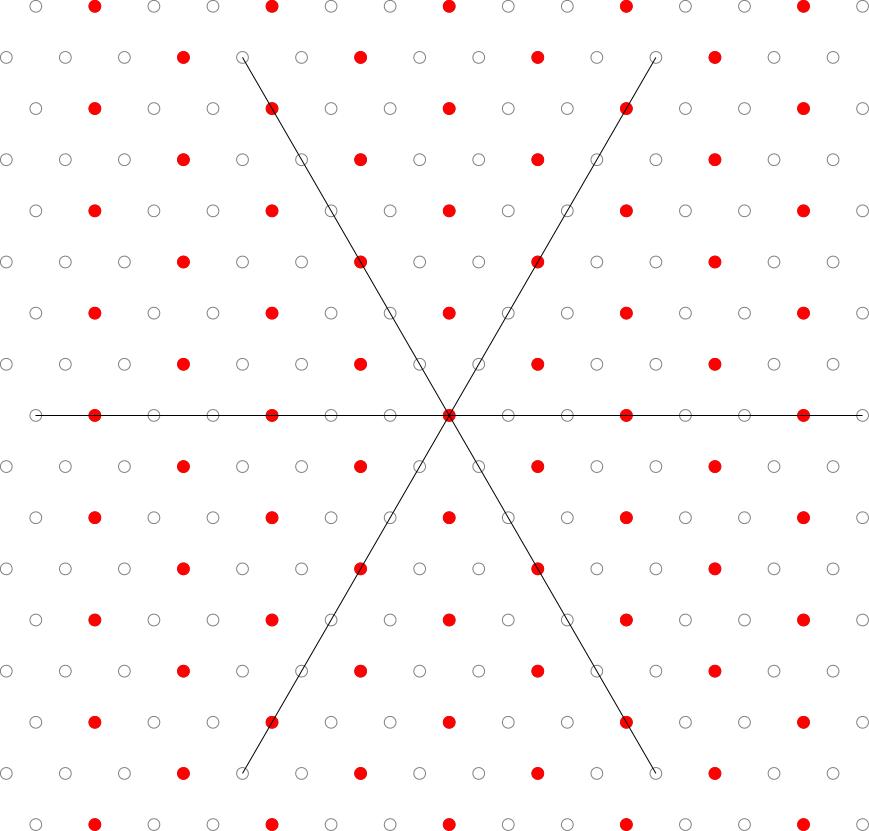
and here are the lattice points appearing in the weight diagram for our example k = 1, l = 2. I have also added some blue lines which point along the root directions just to help you see why this is the right answer in this case.
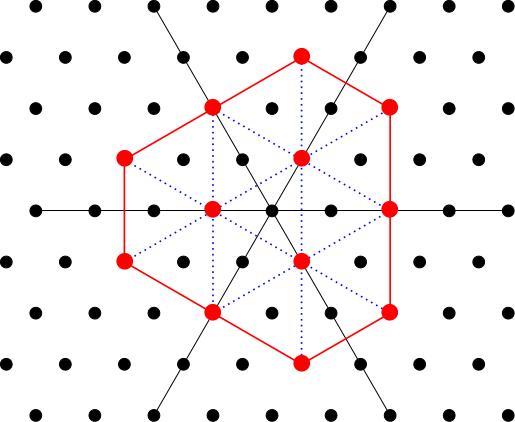
-
For each weight in the diagram, we need to describe the weight space. It's enough to say what its dimension is; this is usually called the multiplicity of the weight space. For SU(2), all weight spaces for an irreducible representation were 1-dimensional, but that's no longer true for SU(3). Instead, we follow the prescription described in the section below.
